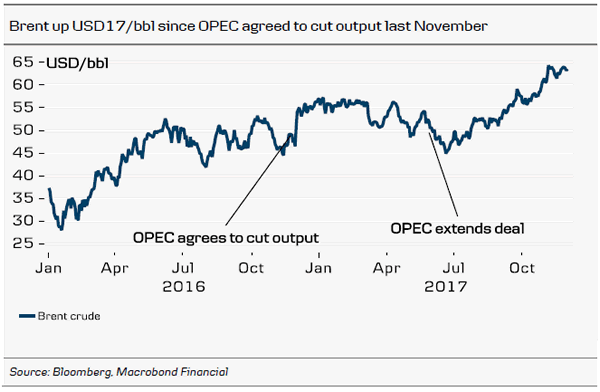- OPEC+ agreed to extend output cuts by 9M with Libya and Nigeria joining the deal, which is set to be reviewed in June.
- The oil market was left disappointed by the risk of OPEC+ ending cuts prematurely by mid next year.
OPEC+ (the 30 oil producing countries in OPEC and outside OPEC) today agreed to extend the deal from last November to cut output by another nine months; hence, until the end of 2018. In addition, Libya and Nigeria joined the deal and agreed to freeze output at 2017 highs. Finally, the group announced that it plans to review the deal in June next year. In relation to the latter part, it is worth noting that the group was said to have discussed a potential exit strategy from cuts yesterday.
The announcement was about as expected in terms of the extension of production cuts and the addition of Libya and Nigeria to the mix. The latter two are already producing close to full capacity; hence, the caps put on their respective output are more of a symbolic character. The latter part of the agreement today, the plan to review cuts in June next year, took the market by surprise. OPEC+ has effectively only committed to cutting production until the June review, which means it has only committed to three months of additional cuts in practice.
The fact that the focus around the OPEC meeting has now turned towards the timing and content of an exit strategy caused the oil market to sell off on the announcement with the price on Brent crude falling to USD62/bbl from USD64/bbl before the meeting. That is a significant price drop for the oil market and could be a signal of what to come. Positioning is stretched long crude and the USD has stopped depreciating. The geopolitical risk factor is looming in the background though to provide some support. Overall, we look for the price on Brent crude to average USD63/bbl next year, while OPEC+ could be more of a downside risk factor if it starts to market an exit strategy.













